I was thinking about how I want to continue my “ten essentials” discussion, and something stood out: I almost always hike solo. Is it dangerous? Yes. You won’t see me mincing words on that. Things that might have been manageable in the presence of others can be outright deadly when alone. But it should be noted that I was with two other people when I broke my ankle, none of whom had any significant medical training, and I’m still here to tell that tale. In other words, life happens with no regard for your sense of how things should be. So I’m going to discuss how I approach solo hiking.
This is going to be less of a structured essay, and more just going over things as they come to mind. Know that I’m probably going to miss some things. This shouldn’t be seen as an exhaustive treatise on the subject. I will always advocate further research and seeking out formalized training from reputable sources.
First: If you don’t have experience hiking, or your experience is that of a small number of hikes, almost exclusively on sunny days in warm weather, consider very carefully whether solo hiking is a good idea for you. I’d get more miles on the trail and consider formal training before setting out alone. Doing anything solo means you’re where the buck stops. Any decision that needs to be made comes from between your own ears, nowhere else. It will be on your shoulders to decide what to do, and you’ll have had to recognize and understand the variables involved before making that decision. In short, if you’re asking the question in the first place, the answer is probably “no.”
Not to put too fine a point on it, even if you’re a very experienced hiker, you can get injured, even killed if you set out unprepared, and preparedness is at least as much mental as it is physical. Even if you’re highly skilled and properly prepared, mistakes, errors in judgement, accidents, and plain bad luck can happen at any time, and without warning. In an austere environment such as the Whites, things that would be minor elsewhere get compounded by the elements. When you were a kid in school, you probably lost countless hats and mittens on the playground. Above treeline in cold, windy weather, that can become a life threatening problem within minutes.
Don’t forget, if something happens that goes beyond your ability to handle things, help arrives slowly in the outdoors. It will take any rescuer at least as long to get to you as you took to get wherever you are. To put that another way, “when seconds count, help is hours away” and during that time, you’ll need to be 100% self sufficient. Remember: the mountains will wait for you. There is no need to rush in.
In past essays, I’ve discussed (amongst other things) navigation, how to stay warm, mental factors, and risk management. Solo hiking, for me, is all those things and more. It’s a distillation of a group hike, but one should consider that in a group, there are synergies that yield a lot of robust, multi-layered strengths. In a group where “everyone brings something to the party” you can have much more graceful failures. Alice forgot her stove? No biggie, Bob has his and some extra fuel. Dave isn’t sure which mountains are which, but Carole is an absolute maven at identifying even the most distant peaks. As I mentioned above, when you’re solo, you have none of those advantages. Forgetting gear means it’s time to get creative, or figure out how to do without.
But by going solo, I’ve never gotten to the trail junction and had an argument about whether to hit Mt Tom first, or bag Field and Willey and then Tom. When I’ve gotten to a point where it felt right to turn around, I never had a partner egging me on. Sure, I’ve not been able to share stellar views with cherished friends, but then again, there’s a lot of zen in solitude.
At this, I’m going to point out: when I’m talking here about solo, I’m not talking about the months when the trailheads are packed like sardines with cars from as many as three states away. On any Saturday in July, you could sit by the side of Falling Waters trail and count people walking past at five minute intervals. There, you can be hiking “solo” but you’d be far from alone.
So with all that in mind… how do I approach a hike, from the solo hiker perspective? On one level, I don’t think a lot changes from planning a group hike. The obvious exception is that all the planning is done by me. There’s a liberating part to that, because I’m the one who’s seen the map, planned the route, and so on. At the same time, it’s a certain amount of work, depending on the route. I might spend no time apart from checking the weather if I’m hiking the White Dot trail on Monadnock. I’ve done that one at least 100 times, in all weather, so it’s not got many secrets left. Planning my Pemi Loop, I spent several hours working out the details — and that’s having already hiked sections of it at least twice. Everything else falls somewhere in between.
What are the things I’m looking at? For starters, I’m paying attention to the weather. Like everyone else, I get only so many days off every week, and if a big storm is rolling in, that’s going to affect my choices. It doesn’t necessarily knock a day in the mountains off the calendar, though. I try to approach my various hiking lists by grabbing “perfect” days as they come for the harder hikes, and keeping a few easier hikes on standby for those times when the weather is iffy. So if it’s crazy windy out, I might choose a hike up Tecumseh instead of doing the Lincoln-Lafayette loop, for example. But first nice day I get after that…
One of the coolest things is the animated maps you can find on the National Weather Service’s website. Watching how the storms are moving in places like Indiana (where storms are about a day away) can give me a sense of what to expect. I don’t neglect to watch how things are unfolding in Florida, up through the Carolinas, because that track typically winds up in New England in around the same time frame. The two together is a double whammy, and as everyone around here has no doubt experienced, those are storms to be taken very seriously. At the most, I’ll consider hitting a low-lying local mountain for a quick outing, but only if even that makes sense.
Having a sense of what the weather is up to, I’m looking at the map, for wherever I’m going. During downtime at work, I’ll sometimes just break out the map and look around, so I usually have a good idea of what I want to do next. It’s nice hiking in New Hampshire, because we enjoy a cartographic embarrassment of riches. We can thank people like Arnold Guyot for getting that ball rolling. New Hampshire has attracted a lot of people for at least 200 years, many of whom have spent countless amounts of time examining its geology from almost every angle.
The AMC has mapped a lot of the state, and then there are the other clubs, each focusing on their corner — the Randolph Mountain Club, Waterville Valley Athletic and Improvement Association, and so on. Between them all, the granite state is almost wallpapered in detailed maps. Looking toward places beyond, it can get a bit tougher. I had to do some hunting around to find adequate maps when I did the Vermont and Maine parts of the New England 67. I can’t stress the importance of a good paper map.
I want to see if there are steep sections and where they are. Does the trail switch back? In winter, is that on the north side, and should I expect ice? If it’s near the road, and in the southernmost part, can I expect that to be a popular, well maintained trail? What about water crossings? In short, I want to gain an appreciation for how easy or hard the hike is going to be. Adding up the total distance, I’m also gaining an appreciation for how long it’ll take me.
The AMC White Mountain Guide is a dense tome, but it is authoritative and pretty reliable at this point. But they’re not the only ones, and there, I have a stack of guidebooks from other authors and publishers, each with a different focus. Combined, I can get a really good sense of the trail before heading out. I’m trying, at this point, to reduce the number of surprises.
Coupled with all this, I’m looking at New England Trail Conditions. I’d prefer to see something within the last week, on the trails I’m planning on using. Most times, that’s the case. But with some regularity, I’ll have to infer from either other trails on that mountain, or other mountains in the area. Mostly, this happens in the springtime, after the passage of astronomical winter, and before the snow melts. There are many more hikers nailing down their winter 48 lists than there are hikers nailing down late March, April and early May for their grids on the less glamorous peaks.
On my blog, I’ve got times and distances for all my hikes, plus basic weather conditions. This is obviously valuable data, because it’s not just the AMC’s estimate, it’s how I hiked that trail. So that gets checked, too.
At this point, I should also mention fitness. I don’t want people to think that you need to be this perfectly hewn example of the Greco-Roman ideal form that comes straight out of central casting, but at the same time, I take care of my body. Having seen so many people on the trail, I honestly believe almost anyone can summit a mountain if they put their mind to the task. But I’ve also seen some people who seem to have an easier time of it than others. Mental attitude gets me a long way, but I’d make none of those steps if I wasn’t in some semblance of decent shape. It’s not rocket science. I just eat mindfully, get in at least half an hour of honest exercise every day, and don’t make excuses. Nothing huge, but I hold myself to it.
Lastly, I’m examining my gear that I intend to take with me. Going out as often as I do, my pack stays, for the most part, packed. Every so often, though, I do a quick audit. Less often, but a few times a year, I physically dump everything out and look at things in finer detail. Overall, I’d say 80% of the stuff doesn’t change. I’m going to bring my first aid kit, for example. If my rain gear got wet, I dried it out and repacked it. So on and so forth. But there are things that get swapped out from time to time based on need. Oh, and I check my snack/food bag.
Now what’s in the pack? Put simply, it’s my survival kit. I aim to always be able to spend an unplanned night on the mountain and be alive come dawn. It might not be the most comfortable night. But I’ll have my stove and some food, and some extra clothes. My sleeping bag and my sleeping pad, and an emergency bivy sack to keep me warm and dry. In winter, I pack a small folding saw. In normal use, it helps clear away blow-downs. But in a pinch, some pine boughs will make a bed to insulate me from the snow. A few more, and I’ve got something to block the wind. Along with my first aid kit and repair supplies, I’ve also got my personal locator beacon. Again, I’m on my own, so I need self sufficiency.
OK, let’s presume I’ve driven up, and I’m parked at the trailhead. In the wintry parts of the shoulder seasons, I’m going to take a quick peek up the trail and decide whether I’m carrying or wearing snowshoes. Going back to the self sufficiency part of hiking solo, I’m bringing more gear than I’ll ever need, certainly of the things that I can’t fake. Going down the trail a couple hundred yards, it’s annoying but still feasible to run back to the car. Past that, though, and now I’m debating whether to continue upward.
So now, I’m on the trail. Heading up, I’m watching the time, and I’m balancing it against weather and trail conditions. One of the things I like to do is monitor my average per-mile pace. Obviously, on the uphill, this is going to be different than the downhill. But I’ve been able to work out how fast I should be going, based on certain conditions. If I’m deviating, I’m thinking about the amount of daylight left, and the feasibility of my plan. Again, it’s never too late to turn around.
At this point, for the most part, I’m paying attention to navigation, and following my risk management strategies. I’m watching the weather, and layering up or down as needed. Hiking solo means I’m not slowing people down if I’m taking pictures, and so I do. I can spend several minutes taking pictures of wildflowers. But again, I watch the time. And I’m frequently reassessing. Always asking and answering the question “should I be here?” Above everything else, I will turn around on a dime and not look back for an instant the moment I can’t answer that question with a resounding “yes.”
By the way, water crossings tend to be thoughtful affairs if they’re anything bigger than a hop, or have fewer stepping stones that are flat, wide, and stable. Keeping dry is paramount. But also, if there’s a deeper crossing with fast water, falling in can become very deadly, very quickly. So here, aside from spending a long time scoping out a line, I’ll also be sure to unbuckle my pack’s hip belt and sternum strap, and loosen the shoulder straps a little. Object is to make it easier to get rid of my pack should I go into the drink.
In the water, your pack will affect your ability to position yourself favorably. If it gets waterlogged (and presume it will) then it’ll be heavier, and throw you off balance should you be in a position to stand up again. So I want to be able to rid myself of it right off the bat. I can figure out how to retrieve it later.
Riffing on that some more, I’m also looking at the water level, and considering what the weather has been lately, and what’s forecast. I’ve seen it where a brook was only modestly swollen, but still quite passable, in the morning. In the afternoon, with the addition of some meltwater, or maybe there was a mid-grade rain all day, that same brook might be outright deadly. It’s not the depth of the water, it’s the nearby mountains that have funneled water into it. If there’s any hint that the water level might change by the time of my return (or maybe ice bridges might melt as the day gets warmer) then I’m going to consider my options at that point. Including heading back.
I’d be remiss if I forgot drinking water. Obviously if you’re crossing water, and it’s moving, you could probably drink it if you had a filter. And I carry one of those in the warmer months. So at those points, based on need, I’ll stop and replenish. Not the least of which, in summer, mountain water is ice-cold and delicious. It’s the pause that refreshes, and not one to be missed!
The rest of it is usually a normal hike. I keep a good situational awareness. I’ll watch the change in trees, monitoring my elevation. I’m listening to the wind through the trees, and where there are gaps, I’m looking as far out as I can, to keep tabs on incoming weather. And that’s about it. Left foot, right foot, lather, rinse, repeat.
So that’s some of what I think of when solo hiking. Realistically speaking, no single essay is going to completely inform anyone. It’s a matter that deserves ongoing study. As I mentioned at the beginning, hiking with others has obvious benefits if things go wrong. Hiking on your own means you’re responsible for every aspect of the hike, and you have no immediate resources to lean on if things go sideways. But while it’s true that people were indeed around me when I got hurt, the fact remains that I still ended up with a broken ankle. One thing you should never forget, whether you hike solo, or in groups, is that the wilderness is ultimately wild, and should never be underestimated.
As always, stay safe out there.
If you enjoy reading these posts, please subscribe — stay in the loop! Your email will only be used to alert you of new posts — typically 1-2 times per week. I will not use or share your email for any other purpose without your express permission. And feel free to share via social media using the buttons below.
Find me in the mountains, on this blog, or on Twitter: @Protean_Hiker
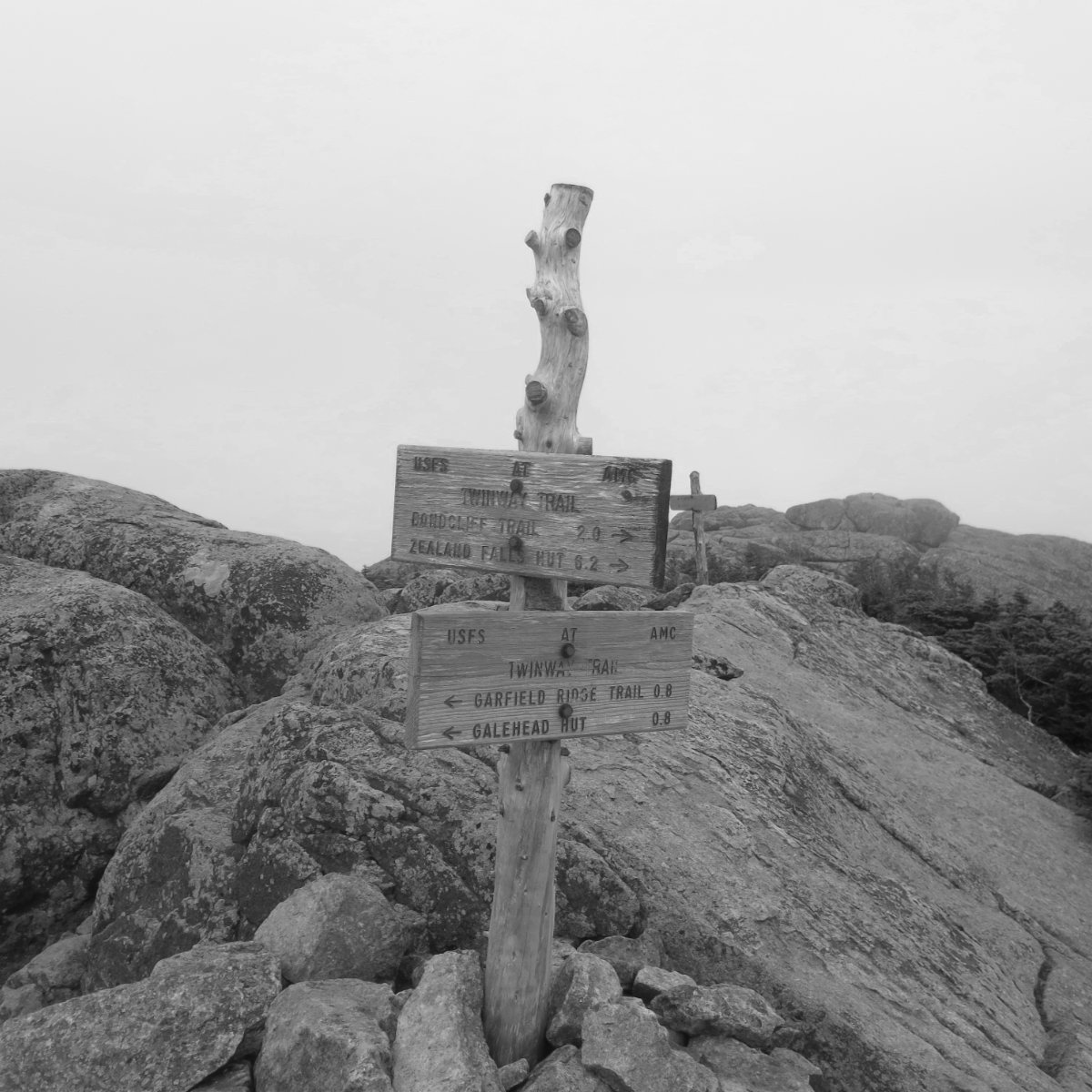
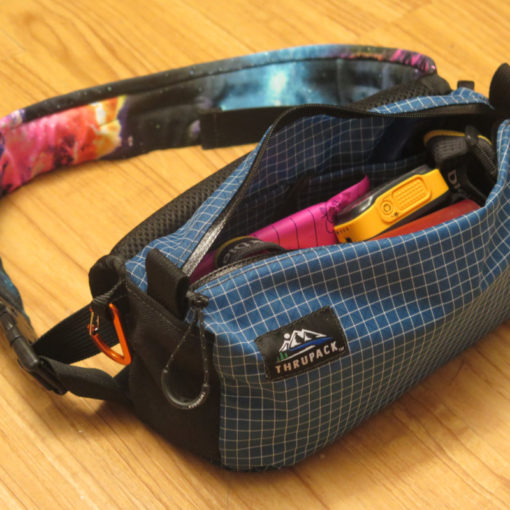
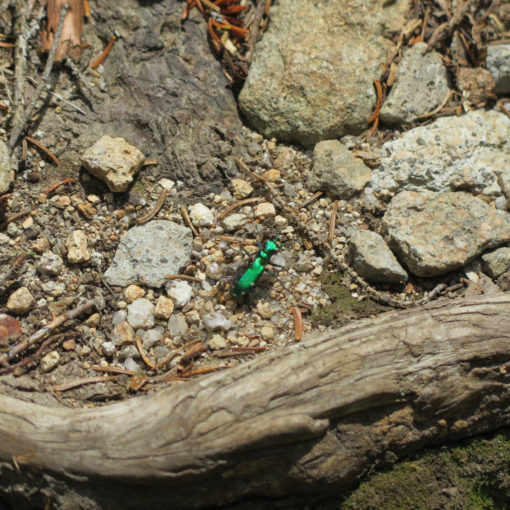
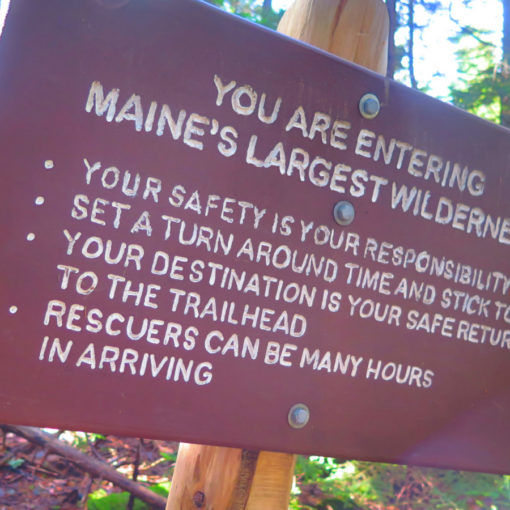
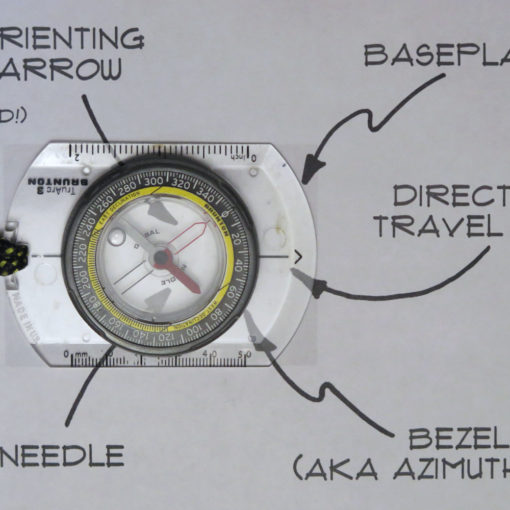
3 thoughts on “Ten Essentials for Hiking Safely: Solo Hiking”
Just found your blog and am so grateful that you have taken the time to write this. You mention books. I have the White Mountain Guide but am looking to expand and wonder what other books you would recommend as must-haves. Thanks for everything!
Hi Elie! Welcome!
Wow, you just uncorked a good one. And you’re absolutely right, I should probably write an essay about the reference materials I rely on. So yep, it’ll be coming shortly. Stay tuned. Are there any matters of particular interest?
Cheers!
Protean, that would be incredibly helpful. And I haven’t read the entire backlog of your posts (YET!),but if you’d like to include the latest gear you like, too, that would be helpful. For instance, do you have a GPS or are you a compass and map guy? Perhaps that’s already in your navigation posts so I’ll look for answers to my questions and if I have more, I’ll ask away. Definitely interested in your reference materials. Agains, thanks so much for writing this blog. It appears to be a treasure trove.